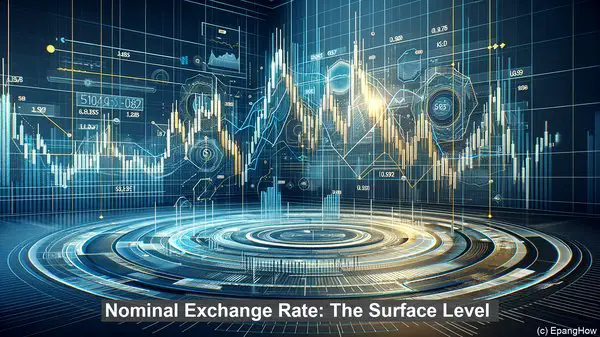Introduction: The World of Exchange Rates
Hello everyone! Welcome to today’s article, where we’re going to explore the fascinating realm of exchange rates. These rates, which determine the value of one currency in relation to another, play a pivotal role in international trade and finance. While many of us are familiar with the term ‘exchange rate,’ there are actually two distinct types: the real exchange rate and the nominal exchange rate. Today, we’ll be focusing on the differences between these two, as well as their individual implications.
Nominal Exchange Rate: The Surface Level
Let’s start with the nominal exchange rate. This is the rate that we often encounter in daily life, as it’s the one displayed on currency exchange boards or used for international transactions. The nominal exchange rate simply represents the price at which one currency can be exchanged for another. For example, if the nominal exchange rate between the US dollar and the Euro is 1.2, it means that 1 US dollar is equivalent to 1.2 Euros. However, while the nominal exchange rate provides a quick snapshot of the value of a currency, it doesn’t tell the whole story.

Real Exchange Rate: The Deeper Dive
This is where the real exchange rate comes into play. Unlike the nominal exchange rate, the real exchange rate takes into account not just the price of currencies, but also the relative purchasing power of those currencies. In other words, it considers what a given amount of money can actually buy in different countries. To calculate the real exchange rate, economists often use a formula that incorporates factors such as inflation and the price levels of goods and services. The result is a more comprehensive measure of a currency’s value.

Understanding the Significance
So, why is it important to differentiate between the real and nominal exchange rates? Well, the answer lies in their respective implications. The nominal exchange rate primarily affects the cost of imports and exports, as well as the competitiveness of a country’s goods and services in the global market. On the other hand, the real exchange rate has broader economic implications. It can impact a country’s trade balance, its attractiveness to foreign investors, and even its overall economic stability. By considering both rates, policymakers and economists can gain a more nuanced understanding of a country’s economic situation.
Factors Influencing Exchange Rates
Before we wrap up, let’s briefly touch on some of the factors that can influence exchange rates. While the list is extensive, a few key determinants include interest rates, inflation, political stability, and market speculation. These factors, both individually and collectively, can cause exchange rates to fluctuate, sometimes quite dramatically. As a result, monitoring and analyzing these factors is crucial for anyone involved in international trade or finance.
